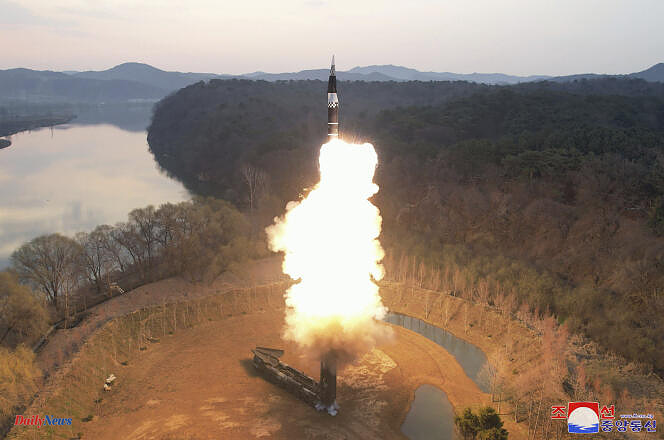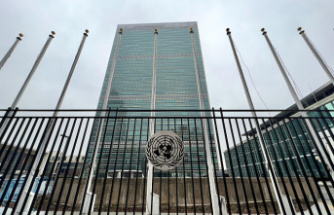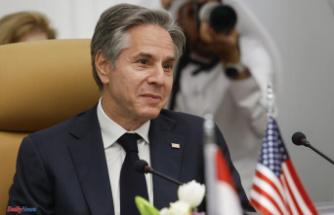North Korean leader Kim Jong-un supervised the test of a new medium-to-long-range solid-fueled hypersonic missile, state agency KCNA said on Wednesday (April 3), praising the “military strategic value important” of the new weapon.
A video broadcast by KCNA shows the missile being placed on its launch vehicle, as Kim Jong-un and a group of uniformed soldiers look on, before the missile takes off, leaving behind a plume of smoke and flames.
Pyongyang has thus developed "another powerful offensive strategic weapon" and achieved its objective of equipping itself with missiles "of different ranges, solid fuel, controlled warhead and nuclear warhead", declared Mr. Kim, quoted by the 'agency.
The test, carried out early Tuesday, focused on a “new type of intermediate-range solid propellant ballistic missile”, named Hwasongpho-16B and “loaded with a hypersonic warhead”, detailed KCNA. Kim Jong-un personally gave the order to launch the device from the command post, the agency added.
The South Korean military said the missile traveled about 600 kilometers before crashing into the waters between South Korea and Japan. KCNA for its part affirmed that it traveled around 1,000 kilometers and “did not have a negative effect on the security of neighboring countries”.
The desire to master hypersonic technologies
The launch comes less than two weeks after it was announced that Kim Jong-un had overseen the testing of a solid-fuel engine for a “new type of intermediate-range hypersonic missile.”
North Korea has long sought to master more advanced hypersonic and solid-fuel technologies to make its missiles better able to neutralize South Korean and U.S. missile defense systems and threaten bases. American regional military.
Hypersonic missiles travel at speeds of at least Mach 5, or more than 6,000 km/h. They are capable of adopting a random trajectory in mid-flight, which makes them more difficult to intercept. They can carry conventional or nuclear warheads. The use of solid fuel eliminates the need to refuel before launch, which makes their deployment faster and consequently reduces the possibilities of interception.
According to Hong Min, senior analyst at the South Korean Institute for National Unification, this technology is likely to further compromise regional security. “With its improved and unpredictable maneuverability, it represents a serious security threat” as it risks compromising “South Korea’s missile interception,” he told Agence France- Press.
This expert estimated that the effective range of the Hwasongpho-16B was likely in the order of “3,000 kilometers.” If so, it “would give Pyongyang a great deterrent against US aircraft carriers deployed in the region as well as US bases on Guam” in the Pacific, he noted.
Joint exercise between Washington and Tokyo
Pyongyang has been under a series of sanctions since its second nuclear test in 2009, but has nevertheless continued to develop its nuclear and weapons programs.
In early 2024, North Korea designated Seoul its “main enemy,” closed agencies dedicated to inter-Korean dialogue, and threatened war for any violation of its territory “even by 0.001 millimeter.”
In March, the United States and South Korea held one of their major annual joint military exercises, drawing the ire of Pyongyang, which systematically accuses the exercises of being rehearsals for an invasion. On Tuesday, after the launch, South Korea's defense ministry announced it had conducted a joint air exercise with Washington and Tokyo, involving a nuclear-capable B-52H bomber and F-15K fighter jets.












